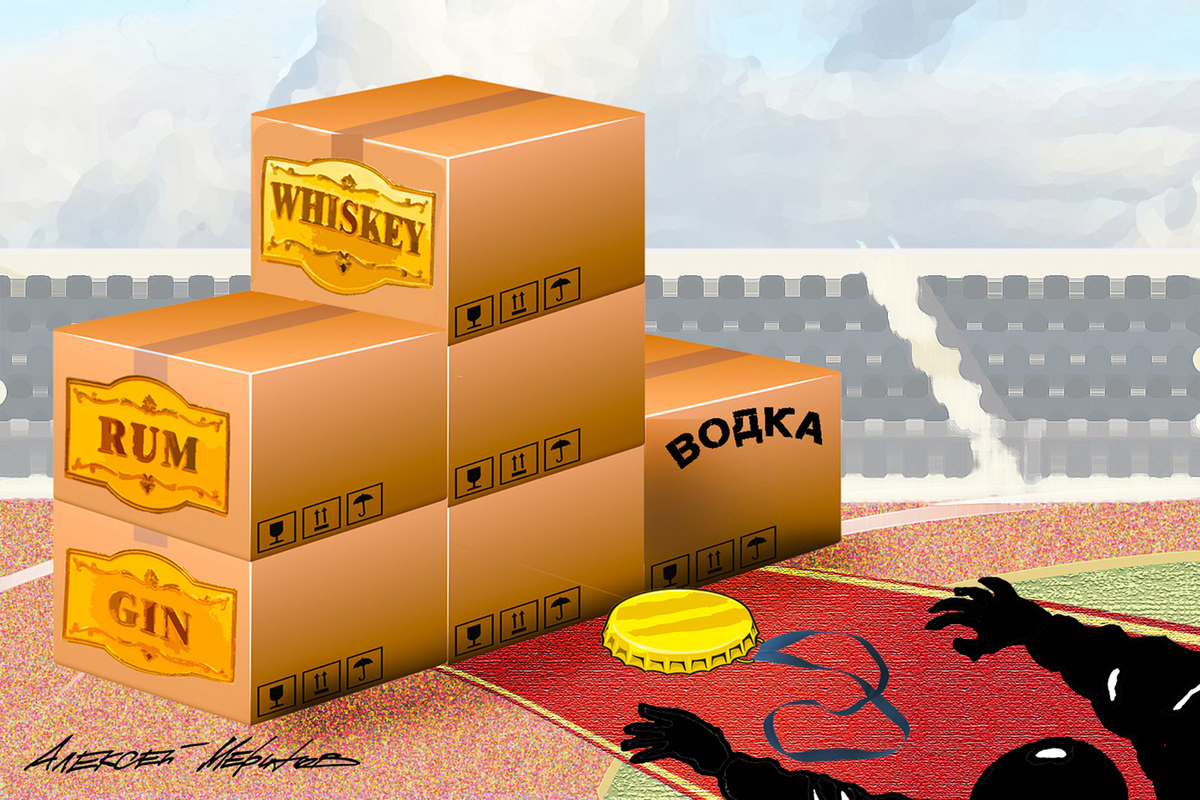Without a glass of vodka on the table: Russians switch to noble drinks
[ad_1]

Vodka sales fall in favor of cognac and gin
Alcohol sales in our country are growing by leaps and bounds. In 2023, Russians, according to Rosalkogoltabakkontrol, purchased almost 230 million dal of alcohol, which is 4% more than a year earlier. This is an absolute record for sales of alcoholic beverages. It is remarkable that the traditional demand for vodka has decreased, while sales of cognac, gin and low-alcohol products, on the contrary, have increased significantly.
According to the alcohol regulator, demand for vodka fell by almost 1% last year, while sales of cognac increased by approximately 10%, and other alcoholic drinks with an alcohol content above 25% (whisky, gin, rum) by approximately 15%. The consumption of low-alcohol products – beer and cider – increased by the same amount. Why our compatriots are abandoning the traditional Russian “white” in favor of more noble alcoholic drinks, said Ruslan Bragin, a member of the Guild of Marketers, an expert on the marketing of strong alcohol.
– Can we conclude that Russians, even in conditions of financial instability, are buying more and more alcohol?
– There is an objective explanation for this. People become more uncertain about the future and develop depression. Streams of negative news seriously unnerve society. Alcohol serves as a protective psychological reaction, so the question of the increase in demand for intoxicating drinks should rather be addressed not to statisticians, but to psychologists. At the first stage, alcohol functions as an antidepressant, and the next morning as a depressant. Nevertheless, people try to relieve stress in this way. However, it is not worth generalizing at the national level. To fully study this issue, in-depth research and the creation of focus groups are needed, the participants of which will explain why they took one bottle yesterday, and today they buy two.
– What explains the decline in sales of vodka and the increase in consumption of cognac, gin, whiskey and rum?
– When we are talking about reorienting demand by 1-2%. then this can be considered a statistical error. When we talk about a market change of 10-15%, the situation indicates a trend. Russians want to expand the range of alcoholic drinks. Perhaps the generation that has been drinking mostly vodka for years has become simply bored. Increasing the consumption of cognac and brandy is not a way to get drunk – it is customary to end lunch or dinner with such alcohol. In fact, this is a tasting confirming the increase in the culture of alcohol consumption in society.
Take gin, for example, which is easy to make and for which distilleries have already created an entire product line. Since the pandemic, its sales have increased by about 40%. Of course, in Russia gin is prepared not according to British recipes, but according to its own methodology, which has existed for a century and is now undergoing modification. The same goes for cocktail culture. In particular, gin and tonic, since, most likely, in 90% of cases this alcohol is drunk after mixing with a traditional type of soda. This is a more socially responsible way to consume alcohol. Since the degree decreases, the removal of alcohol from the body occurs much faster. As a result, the alcoholism of the population is decreasing – people are not going to get drunk, but just have a good time. The spread of gin in Russia should be considered a positive trend.
– The same can be said about the growth in consumption of still, sparkling and liqueur wines?
– Undoubtedly. The move away from vodka consumption in its pure form, typical of northern countries, indicates progress. The development of the market for still wines, ports and liqueurs is another step towards improving the drinking culture and strengthening the health of the nation. The same can be said about other low-alcohol products, for example, beer or cider. Of course, there is a nuance of dividing society into social groups: people receiving a salary of 500 thousand rubles can afford more expensive drinks, but those earning only 35 thousand have to look for affordable categories of alcohol.
– What can we expect in terms of alcohol consumption in 2024? Will there be a new record?
– The trend will continue. We must take into account new delivery logistics – in particular, from India and China, which now supply us with strong alcohol. It is worth considering the possibility of attracting new loans by domestic winemakers, breweries and distilleries. Nevertheless: if a trend has emerged, it will continue. There is a diversification of demand for strong drinks, not in the direction of strong products, but in favor of low-alcohol drinks, which put people’s health at less risk.
[ad_2]
Source link






